Originally a fortress, the Alcázar has also been a royal palace, the site of Philip II's wedding to his fourth wife, Anne of Austria, and more recently a military academy. In the upper part of the city, the oldest foundations have been identified as Roman. Documents indicate that a fortress existed on this site by the early 12th century known as the Alcázar, an Arabic word for a royal residence. The palace was enlarged in the 13th and 14th centuries and again during the reign of King John II (1405-1454) when towers were added and the East Tower and moat were enlarged. Under Philip II (1558-1598) major alterations were made; slate roofs and spires on towers were added. From 1764-1862 the Royal Artillery College was housed here. A fire in 1862 destroyed most of the structure, which was rebuilt about two decades later in a more romantic style than the original building.
|

|

|
The west end of the palace/fortress with the Keep and the round tower which served as a Treasury |
| |
|
Distant view (taken two years later, winter, 2005) |
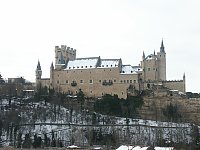
|
| |
|
Views from the west (left), northwest (center) and south (right) |
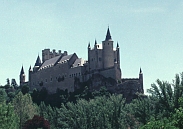
|

|
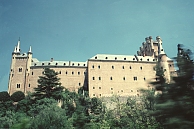
|
| |
|
During John II's reign the East Tower was enlarged; now called the Tower of John II, it is twice as high as the original (which came to the line of balls across the center, halfway up) and twice as wide. The double horseshoe window, which dates from the 13th century, was once in the center of the tower. Bars on the windows reveal this tower's history as a state prison.
|
The East Tower or Tower of John IIThe tower is decorated with sgraffito, relief geometric designs. |
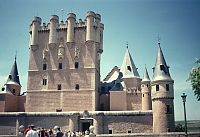
|
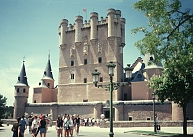
|
| |
|
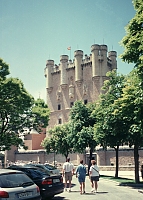
|
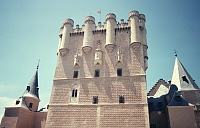
|
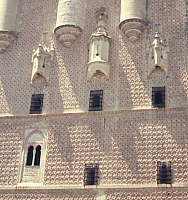
|
| |
|
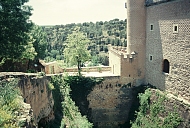
|
The moatThe defensive moat goes back to the middle ages although the arcade spanning it dates from the 16th century. At 26 meters down, it was crossed by a drawbridge at the front of the palace. (See above--this entrance has a cartouche above the portal.) |


 Click here to return to index of art historical sites.
Click here to return to index of art historical sites.
 Click here to return to index of artists and architects.
Click here to return to index of artists and architects.
 Click here to return to chronological index.
Click here to return to chronological index.
 Click here to see the home page of Bluffton College.
Click here to see the home page of Bluffton College.
